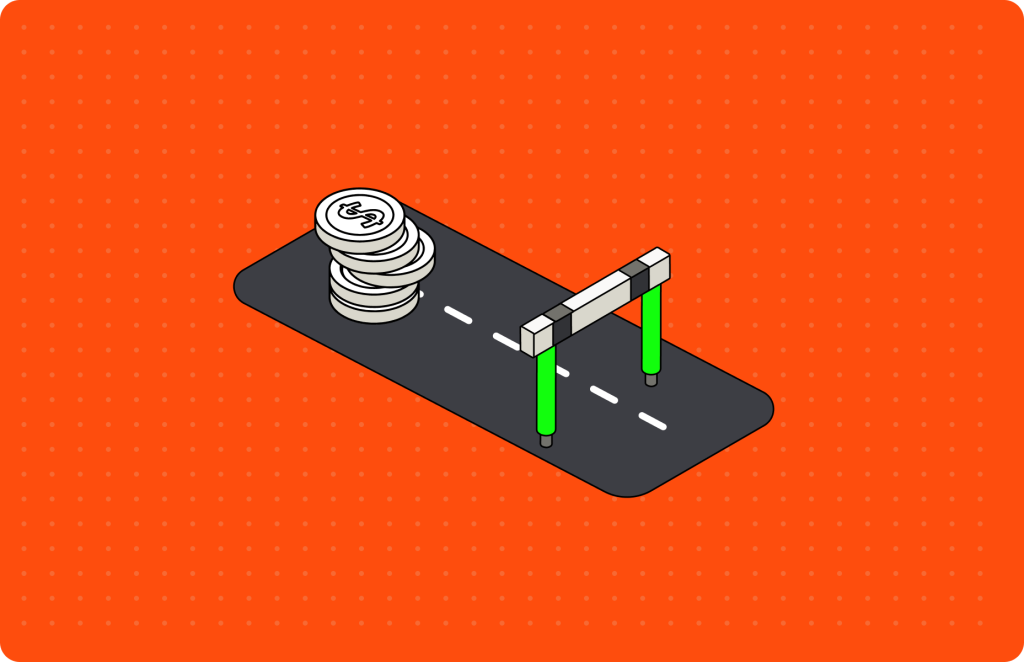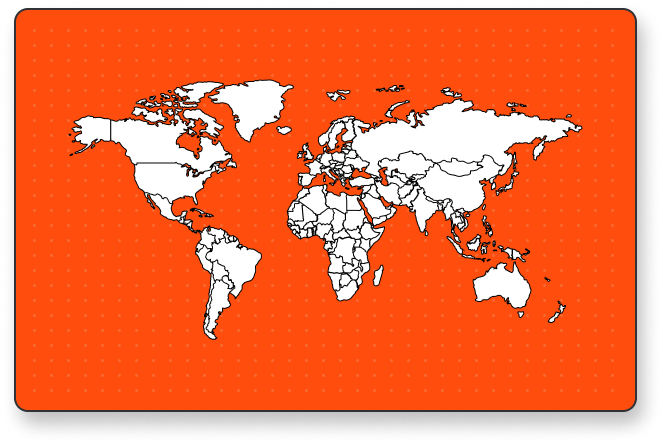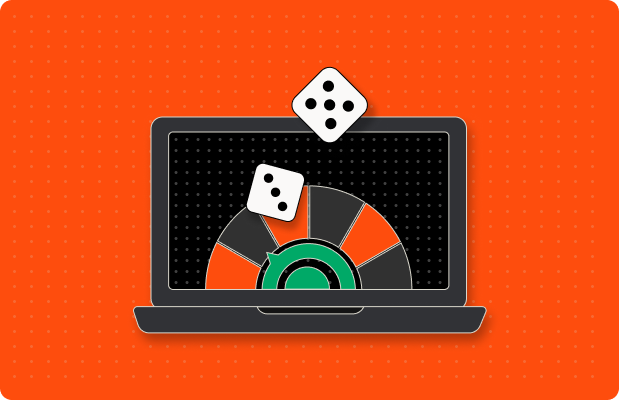Brokerage Business
10 minutes read
Jul 2, 2025
Be an Affiliate VS Start Your Own Trading Platform
Entering the online trading industry comes with two major paths: becoming an affiliate or launching your own trading platform. Both offer access to the same fast-growing market, but they differ radically in risk, reward and responsibility.
Affiliates focus on traffic generation and referrals. They promote established platforms and earn commissions from each signup or trade. It’s a low-risk, fast-start model, but it comes with limitations on control and income.
Starting your own trading platform means running the full business. It includes legal setup, platform technology, client acquisition and compliance. It requires more capital and planning, but the upside is much greater and so is the brand equity you build over time.
This guide breaks down both models in detail, what they offer, what they demand and which one fits your goals best. Whether you’re a content creator, marketer or entrepreneur ready to scale, this comparison will help you make the right move.
Business Model Overview: Affiliate vs. Broker Owner
The first step to deciding between affiliate marketing and launching your own trading platform is understanding how each model works in practice.
Affiliate Model
In the affiliate setup, you don’t run the trading platform. Instead, you act as a performance-based marketer. Your role is to drive traffic to a brokerage using content, ads, email or social media. When someone signs up or makes a trade through your link, you earn a commission.
There are typically three types of payouts:
- CPA (Cost Per Acquisition) – fixed commission per signup
- Revenue Share – a percentage of the trader’s lifetime activity
- Hybrid – a mix of both models
This model is scalable with the right content or ad strategy, but you’re fully dependent on the broker’s success, terms and tracking system.
Brokerage Ownership
If you start your own trading platform, you operate as a full-service provider. You choose your platform provider, get a license, onboard clients, provide support and manage all operational elements.
Revenue comes from:
- Spreads and commissions per trade
- Swap/overnight fees
- Platform or subscription fees
- Upgrades and value-added services
This route requires more capital and setup time but puts you in full control of user experience, branding and profit margins.
In short, affiliates earn by referring. Platform owners earn by servicing. Your choice depends on how much responsibility and upside you’re ready to handle.
Costs and Barriers to Entry
Choosing between being an affiliate or running your own platform often comes down to the investment you’re willing to make. Each model has a very different entry point in terms of time, capital and complexity.
Affiliate Model Costs
Affiliates can start with minimal upfront investment. The main costs typically go into marketing assets such as a website, SEO tools, paid ads or social media content. There’s no need to build a trading system, manage funds or obtain a financial license.
Typical cost areas:
- Website development or landing pages
- Paid advertising or media buying
- Content production (blogs, videos, reviews)
- Affiliate tracking or analytics tools
Some affiliates scale fast by using automation or hiring content teams. Others work solo and still earn steadily. However, they are dependent on the performance of the broker they promote and they cannot influence pricing, user experience or long-term retention.
Broker Platform Ownership Costs
Starting your own platform involves significantly higher upfront costs and longer preparation. You’ll need to budget for technology, legal setup, licensing, operations and ongoing compliance.
Core cost categories include:
- Technology stack or white-label platform
- Liquidity and infrastructure integration
- Regulatory licensing and legal advisory
- Staff, support and CRM systems
- Marketing and acquisition spend
While it’s possible to launch a basic offshore platform starting from $50,000 to $100,000, regulated jurisdictions or custom-built solutions may require several hundred thousand. These costs pay off in brand control, long-term equity and direct revenue per trader.
If you’re looking for a low-risk, fast-start entry, the affiliate model is ideal. But if your goal is full-scale ownership with higher revenue potential, platform operation is the natural next step.
Earning Potential: Revenue and Profit Margins
The income you generate as an affiliate or platform owner depends not only on your traffic or users, but also on how the business model is structured. Both offer strong earning potential, but with very different ceilings and cash flow dynamics.
Affiliate Revenue Model
Affiliate earnings are performance-based. Most partners are paid via CPA, revenue share or a hybrid of both. A good CPA deal might pay $300 to $700 per qualified signup. Revenue share typically ranges from 20% to 40% of the broker’s net income from each trader.
Top affiliates with steady traffic and high-converting content can earn six or even seven figures annually. However, revenue is often tied to campaign results and is vulnerable to tracking issues, policy changes or commission reductions.
Your earnings depend on:
- Volume of traffic or leads
- Conversion rate of the funnel
- Broker’s retention and monetization strategy
- Commission structure and terms
Most affiliate income is passive once content ranks or campaigns run. But there’s little control over lifetime value or monetization levers.
Broker Owner Revenue Model
When you own the platform, revenue comes directly from trading activity. You earn on spreads, commissions, overnight fees and sometimes account upgrades or payment processing margins.
With every trade a client makes, the broker earns a fraction of the volume. The more active traders you have, the more consistent your revenue becomes. A single active user may generate hundreds of dollars per month depending on their volume and asset class.
Key factors impacting profitability:
- Number of active traders
- Average trade volume per user
- Spread or commission configuration
- Platform and payment costs
- Regulatory overhead
While the income per trader is higher, so are the responsibilities. You must handle risk, manage liquidity and ensure operational uptime. But in return, you build a high-margin business with scalable and recurring revenue.
Control, Risk and Responsibility
One of the most important differences between being an affiliate and running your own trading platform is the level of control and responsibility each model requires. These factors affect not just your daily operations, but also your legal exposure, decision-making power and long-term risk.
Affiliate Model
As an affiliate, your role ends once you drive the lead. You don’t manage accounts, funds or compliance. This keeps your risk profile low. You’re not responsible for user losses, platform outages or support delays. However, you also have no influence on the broker’s business decisions or user experience.
The biggest risks affiliates face are:
- Sudden commission cuts or policy changes by the broker
- Tracking discrepancies or unpaid earnings
- Dependence on one or two platforms for income
- Loss of SEO or ad traffic due to algorithm shifts
While the risk is low, so is the level of control. You can scale your campaigns, but not change product pricing, service quality or client retention strategies.
Broker Ownership
Running your own platform gives you full control. You set the branding, choose the tech, define the pricing model and build your acquisition strategy. This level of ownership allows you to optimize every step of the user journey for performance and retention.
But that control comes with responsibility. You’re accountable for compliance with local laws, platform performance, client support and fund security. Any failure on these fronts can result in financial losses or legal penalties.
Operational risks include:
- Platform downtime or execution issues
- Regulatory audits or licensing breaches
- Chargebacks or fraud
- Market volatility and liquidity risks
In exchange for higher income, platform owners take on more complex obligations. Success requires active management, but the rewards are tied directly to your performance, not someone else’s.
Branding and Long-Term Value
Beyond immediate income, each model offers a very different path for building long-term equity. Affiliates earn quickly, but rarely create lasting assets. Platform owners, on the other hand, build brand value that compounds over time.
Affiliate Model
In most affiliate setups, the brand you promote belongs to the broker. Your content, traffic and campaigns may bring in revenue, but they don’t create a business you can sell or scale independently. Even if you build a strong SEO presence or a large email list, you’re still dependent on external platforms.
Some experienced affiliates attempt to build a personal brand or traffic-generating website. While this adds stability, it still doesn’t offer the same kind of equity as owning a client-facing brokerage brand.
Platform Ownership
When you operate a trading platform, every user you acquire becomes part of your brand’s ecosystem. You control the logo, the messaging, the features and the community. Over time, this creates a real asset that carries resale value or attracts strategic investors.
A well-run platform becomes more valuable with each active trader onboarded. Retention compounds your income. User data and brand recognition give you pricing power. You can also expand into education, asset management or copy trading services under the same brand umbrella.
Legal and Compliance Considerations
Compliance is one of the biggest differences between being an affiliate and operating a brokerage. One model requires minimal legal involvement. The other demands ongoing regulatory attention and risk management.
Affiliate Model
Affiliates generally don’t need a license to operate. Your main responsibility is to follow advertising laws, platform policies and affiliate program terms. Most brokers will provide disclaimers and legal copy to include in your materials. If you run paid ads, you may also need to comply with financial promotion rules on platforms like Google or Meta.
That said, affiliates must still avoid:
- Misleading claims about profits or guarantees
- Promoting unregulated brokers in banned jurisdictions
- Using non-compliant creatives or call-to-action formats
While legal exposure is low, reputational risk still exists. Promoting the wrong partner or ignoring platform rules can get your content removed or accounts banned.
Broker Ownership
Starting your own platform comes with full legal responsibility. This includes acquiring a trading license, managing anti-money laundering (AML) protocols and reporting financials to regulators. The specific requirements depend on your jurisdiction, but even offshore setups involve regular reporting and audits.
Key compliance areas include:
- Client verification (KYC) and onboarding procedures
- AML monitoring and suspicious activity reports
- Data privacy and secure recordkeeping
- Trade execution transparency
- Investor protection policies
Partnering with a white-label provider can simplify the tech and legal process, but you remain the licensed operator. Non-compliance can result in fines, license suspension or even criminal charges in severe cases.
Visual Suggestion: Create a comparison visual of affiliates and brokerage owners legal and compliance considerations
Technology and Setup Time
Launching a trading-related business involves some level of technical setup, but the scope depends heavily on the model you choose. Affiliates rely mostly on front-end tools. Platform owners require full infrastructure and integration.
Affiliate Model
Affiliates need a website, tracking setup and marketing tools. Some may use landing page builders or automation platforms for emails and lead nurturing. The main technical task is implementing tracking links properly and monitoring performance.
Typical tools used:
- Website or blog CMS (e.g., WordPress)
- Affiliate tracking dashboards (provided by the broker)
- SEO tools or paid ad platforms
- Email marketing or CRM integrations
Setup can be completed in days. Updates are ongoing but flexible. You won’t need to manage server loads, platform updates or liquidity connections.
Broker Ownership
Operating a trading platform involves significantly more technology. You’ll need a front-end for traders, a back-end for account management, a CRM for user support and integrations for payments, KYC and liquidity.
Common components:
- Trading platform (custom or white-label)
- Payment gateways and KYC/AML modules
- Risk management and reporting dashboards
- Support tools and trader education portals
Even with a white-label or turnkey provider, full setup typically takes 4 to 8 weeks. Regulated platforms take longer due to licensing, audits and infrastructure requirements.
If you want to launch quickly with minimal technical responsibility, affiliate marketing is the easier path. If you aim to run the full user experience and data stack, owning the platform gives you full flexibility.
Who Should You Choose Each Path?
The right choice depends on your experience, goals and resources. Each model serves a different type of entrepreneur or team and aligning your decision with your strengths leads to better outcomes.
Affiliate Model Is Best For
- Content creators and marketers who want to monetize traffic
- Influencers with existing audiences in finance or trading
- Entrepreneurs looking for fast entry with low capital
- Individuals who prefer performance-based income without operational risk
- SEO or paid traffic experts with experience in digital campaigns
If your core strength is audience building or lead generation, affiliate marketing allows you to focus on what you do best, without managing legal, technical or financial complexity.
Broker Platform Ownership Is Best For
- Fintech entrepreneurs ready to build a long-term brand
- Trading educators or community leaders with loyal followers
- Affiliate networks looking to capture full lifetime value
- Teams with capital and operational experience
- Founders aiming for scale, equity and global expansion
If you have access to traffic and want full control over the product and monetization, owning the platform maximizes your profit per user and builds a scalable asset over time.
Visual Suggestion: Create a visual for why should everyone should choose each path
Conclusion
Both affiliate marketing and owning a trading platform are proven models in the online trading space. Affiliates benefit from speed, flexibility and low startup costs. Platform owners gain control, brand value and long-term profit potential. The better choice depends on your appetite for responsibility, your technical and financial resources and your long-term goals.
If you want to get started quickly and earn from existing platforms, affiliate marketing makes sense. If you’re aiming to build something you own, scale and possibly exit in the future, launching a trading platform is the smarter bet.
FAQ
160

Written by Ivan Bogatyrev
Business Development at FintechFuel
Writing about the exciting worlds of iGaming and the brokerage business, breaking down the latest trends and insights. Making complex topics easy to understand, helping readers stay informed and ahead of the curve.
More by authorRead more

Brokerage Business
10 minutes read
Sep 30, 2025
The brokerage industry in 2026 is entering a new phase shaped by technology, regulation and shifting client demands.


